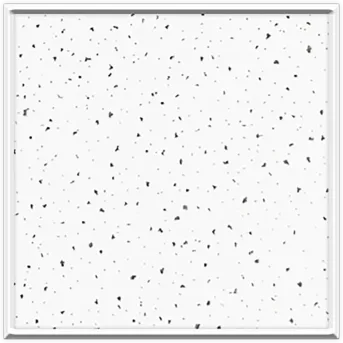8 月 . 14, 2024 06:02 Back to list
Exploring the Benefits and Applications of Mineral Wool Board in Ceiling Construction and Insulation Solutions
The Benefits of Mineral Wool Board Ceiling
In modern construction and interior design, the choice of materials plays a crucial role in achieving optimal performance, aesthetics, and sustainability. One material that has gained significant attention in recent years is mineral wool board. Renowned for its thermal, acoustic, and fire-resistant properties, mineral wool board is increasingly becoming the material of choice for ceilings in various applications, from commercial buildings to residential homes.
What is Mineral Wool?
Mineral wool, also known as rock wool or stone wool, is a type of insulation material created by spinning or drawing molten rock, typically basalt, into fibers. These fibers are then compressed into boards or batts, which can be used in a variety of construction applications. When it comes to ceilings, mineral wool boards offer an array of advantages that make them a popular option among architects, engineers, and contractors.
Superior Thermal Insulation
One of the primary benefits of mineral wool board ceiling systems is their superior thermal insulation properties. Mineral wool has a low thermal conductivity, which means it effectively resists the transfer of heat. This can significantly improve the energy efficiency of a building, leading to lower heating and cooling costs. In colder climates, a mineral wool board ceiling helps to keep warm air inside during winter months, while in warmer areas, it prevents heat from penetrating indoors, maintaining a comfortable indoor temperature year-round.
Excellent Acoustic Performance
Another remarkable feature of mineral wool board ceilings is their outstanding acoustic performance. These boards are highly effective at absorbing sound, making them an ideal choice for environments where noise control is essential, such as offices, schools, and hospitals. The porous structure of mineral wool allows sound waves to enter the material and dissipate, reducing echo and enhancing privacy. This is particularly beneficial in open-plan offices, where conversations can easily carry, disrupting the work environment.
mineral wool board ceiling

Fire Resistance
Fire safety is a paramount concern in building design. Mineral wool board ceilings offer excellent fire-resistant properties, thanks to the non-combustible nature of the material. They can withstand high temperatures without contributing to the spread of flames, providing invaluable time for occupants to evacuate during a fire emergency. Many building codes require fire-rated materials, and mineral wool boards meet or exceed these requirements, making them a safe choice for various commercial applications.
Sustainability
In an era where eco-friendliness is a growing priority, mineral wool boards also shine when it comes to sustainability. Many manufacturers produce mineral wool from recycled materials, and the boards are fully recyclable at the end of their lifespan. Additionally, mineral wool's insulating properties reduce energy consumption, contributing to lower carbon footprints over time. By choosing mineral wool board ceilings, builders and homeowners alike can play their part in promoting greener building practices.
Ease of Installation
Installation of mineral wool board ceilings is relatively straightforward, which can help reduce labor costs on construction projects. The boards are lightweight, making them easier to handle compared to other materials. They can also be cut to fit various designs and spaces without compromising their insulating properties. This versatility allows for creative ceiling designs that can enhance the aesthetic appeal of a building.
Conclusion
In conclusion, mineral wool board ceilings offer a multitude of benefits, including superior thermal and acoustic insulation, fire resistance, sustainability, and ease of installation. These advantages make them an excellent choice for various construction projects, promoting energy efficiency and safety without sacrificing design possibilities. As the demand for innovative building materials continues to rise, mineral wool is poised to remain at the forefront of modern construction practices.
-
Revolutionizing Interior Design with Ceilings t grid Suspended SystemNewsOct.29,2024
-
Revolutionizing Ceiling Design with ceiling access panel with Gypsum Tile WaterproofNewsOct.29,2024
-
Revolutionizing Interior Design with PVC Gypsum Ceiling: A Comprehensive GuideNewsOct.29,2024
-
Elevating Interior Design with High quality Mineral Fiber Ceiling TilesNewsOct.29,2024
-
Revolutionizing Interior Design with PVC Gypsum Ceiling: A Comprehensive GuideNewsOct.29,2024
-
Elevating Interior Design with High-Quality Mineral Fiber Ceiling Tiles: A Comprehensive GuideNewsOct.29,2024







